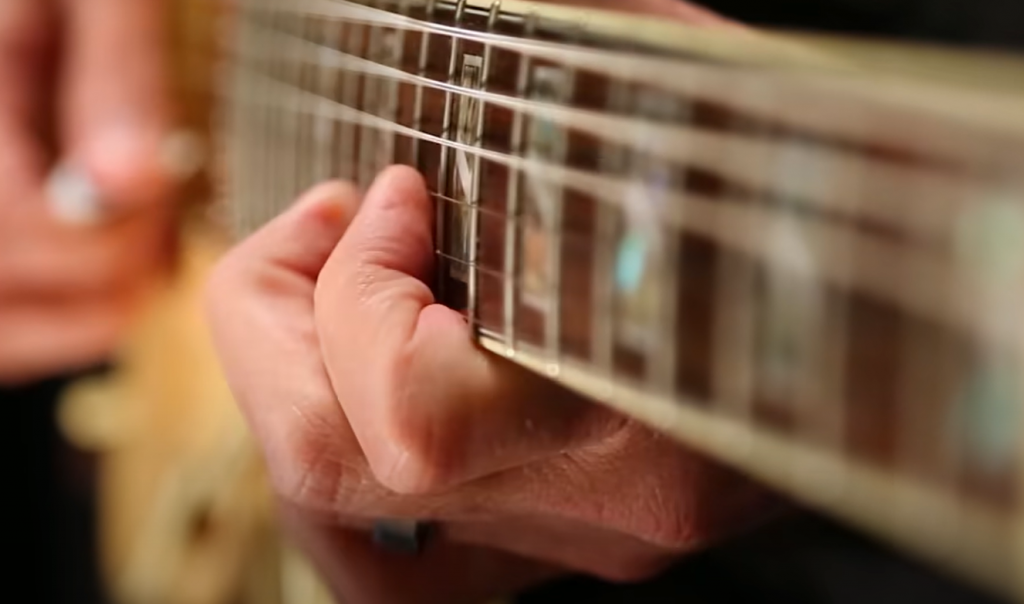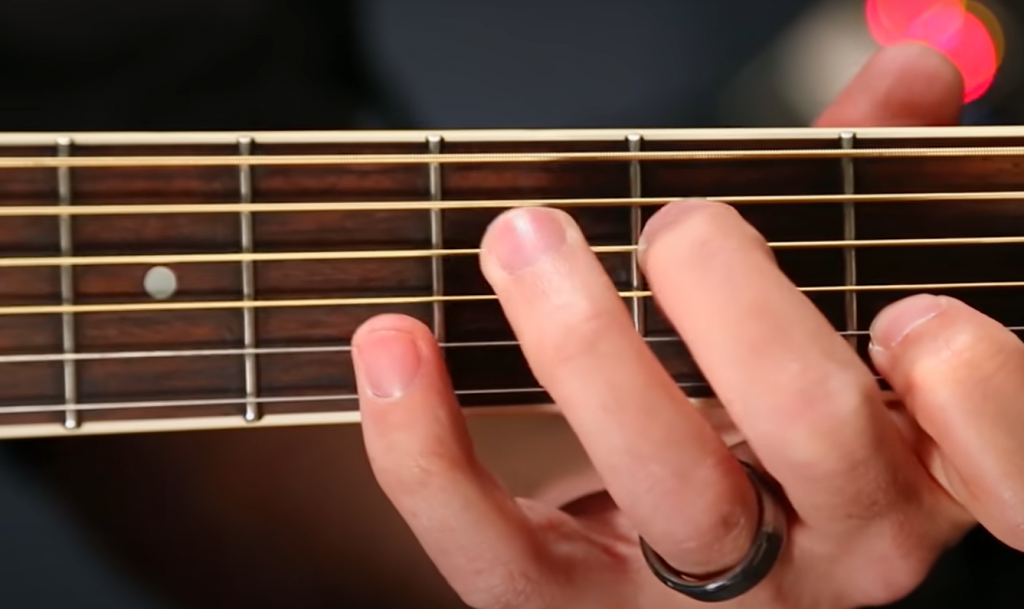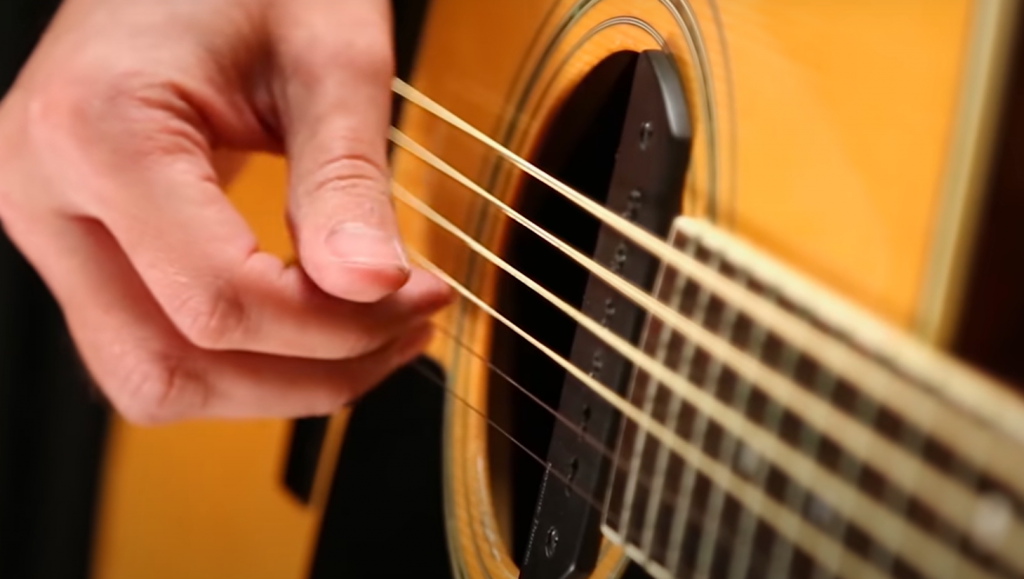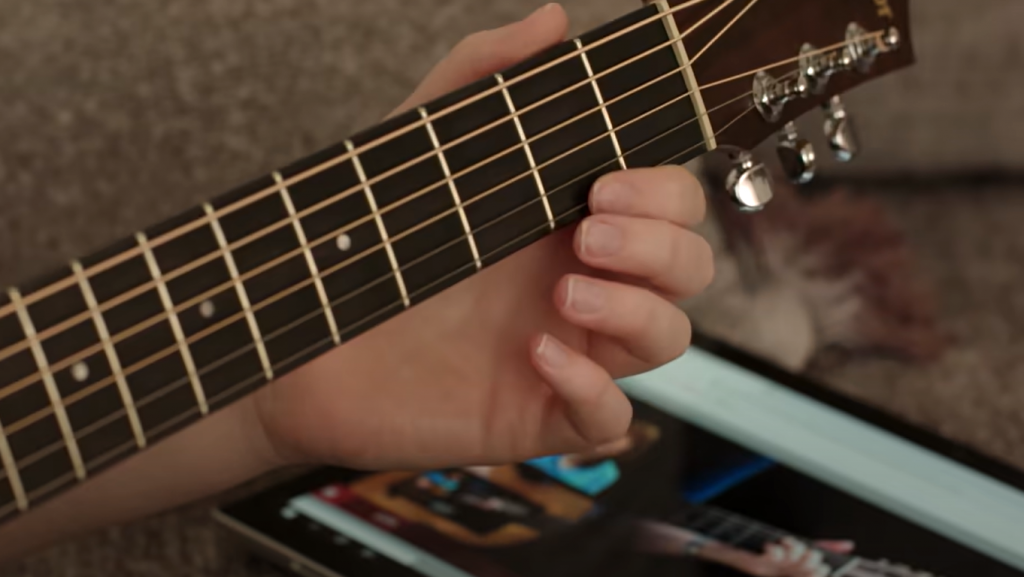There’s nothing quite like the sound of an acoustic guitar. The rich, resonant tones can be truly mesmerizing. Unfortunately, not everyone has the time or ability to learn how to play one of these instruments. If you’re looking for a similar sound but don’t have the resources to learn how to play an unplugged guitar, don’t worry – we’ve got you covered! In this article, we’ll discuss some hints and tips on how to make your electric guitar sound like an acoustic one.
Table of Contents
Acoustic vs. Electric
The debate about which guitar is better – electric or acoustic – has long roots. They always acquire particular relevance among beginners who want to master playing a six-string instrument. But even experienced guitar masters add fuel to the fire, often voicing their subjective views, which, by the way, are not always fair. However, it would be more correct to admit that each tool has its pros and cons, as well as its specific features, which are very difficult to compare, and sometimes simply incorrect. We will consider these differences in this article, which will eventually allow you to make a more balanced and reasoned choice in favor of a particular tool.

Now let’s take a closer look at both tools. The first visual impression is that the structure of the guitars is very similar. Yes, to some extent the electric guitar looks more modern and spectacular, but both guitars are mechanical. A number of differences, of course, are present, but these differences are not cardinal.
For example, the process of sound production, which we immediately easily see, is the same – it comes from the vibration of the strings. Where we find the first significant difference is in sound reproduction.
An electric guitar does not have such a hole initially, so the sound is amplified with the help of special equipment. Without its use, sound reproduction will in fact still be carried out, but only very quiet and of poor quality. Electromagnetic pickups mounted on the instrument pick up the vibrations of the strings, transmit them through the cable to the amplifier, and only then do we get the loud and rich sound that the electric guitar is so famous for.The next difference is the weight of the tool. The electric guitar is noticeably heavier and also requires additional equipment. Against its background, acoustics captivates with its lightness, compactness, ease of use. Often, beginners lose interest in buying an electric guitar when faced with the need to additionally purchase processors, effects pedals, and other equipment that is not entirely clear in purpose, but at a biting price. However, not everything is so scary. If you wish, you will quickly understand all the nuances of additional equipment for an electric guitar, and the prices on the musical goods market are stable. And yet it turns out that an electric guitar requires increased financial expenses compared to buying acoustics, although it rewards its owner with much more functionality.
So, a superficial comparison of the two instruments prompts us to draw the first conclusions: an acoustic guitar is cheaper, it weighs less and does not need additional equipment; an electric guitar, on the contrary, is more expensive, heavier, requires additional equipment, but rewards the owner with much more opportunities.
Further, we will not delve into the features of the structure of both instruments, so as not to get bogged down in insignificant nuances, but we will go directly to the main advantages and disadvantages of each guitar. Of course, we can not do without comparing the sound. Any musician who picks up an acoustic guitar after an electric guitar will involuntarily note to himself that the sound reproduced by acoustics is “live”, while the combo amplifier of an electric guitar gives it an indelible effect of “artificiality”. Well, this is quite the right impression. However, once you get used to the sound of an electric guitar, you will even begin to see some advantage in this difference. After all, the loss of a sense of the naturalness of the sound is to some extent compensated by the loudness and purity of sound, which is also important.
An interesting point is that a novice performer often does not even notice the difference in the sound of electric and acoustic guitars on a “clean” channel. Everything will change dramatically, one has only to start experimenting with sound. You can change the volume, tone, experiment with the equalizer, overload the sound, and impose certain effects on it.
In fact, there is boundless scope for the musician’s imagination. Various functions allow you to experiment with the sound of an electric guitar with extremely interesting and sometimes unexpected results. Believe it or not, this is a very exciting process! But by no means misunderstand us – this does not mean at all that the process of learning to play the acoustic guitar is not an interesting activity. It’s just that the variety of modes available on the electric guitar really gives the player a lot of enticing possibilities. Although this can be seen as a certain negative point: a lot of functionality can confuse a novice guitarist, while playing the acoustic is extremely simple and understandable, which allows you to better concentrate on learning the playing technique.
In a way, playing an electric guitar is easier than playing an acoustic guitar. Electric guitar strings are softer and therefore easier to clamp.
If a string on an acoustic guitar is loosely pressed to the fret, it will definitely rattle, while a similar mistake made on an electric guitar has a chance to smooth out and go unnoticed. Whether to consider it a help or a hindrance in mastering playing the instrument is up to you. But, summarizing what has been said, we note that it will still be more difficult for a guitarist who played an electric instrument to “transfer” to acoustics than in the reverse order.
Now let’s do a brief comparative analysis of the features of the game. There is an erroneous opinion that playing the electric guitar is similar to playing the acoustic, so supposedly you need to start with the latter. We disagree and answer this as follows: you should seriously start on the instrument you plan to play. The playing technique in both cases is significantly different. If both mediator and finger technique are suitable for acoustics, then finger technique is used extremely rarely on the electric guitar. This is a rather significant moment, because it will take a lot of time and effort to master each technique. So it is desirable to be determined immediately.
It remains to consider mobility. An electric guitar is great for home and studio playing, but transporting it can be a bit of a hassle. In addition, it loses its “professional suitability” if for some reason there is no power source. Against the background of an electric guitar, acoustics look more preferable – they are lighter, more compact, not afraid of transportation and are ready for use at any time. In fact, it has long become a convenient and pleasant attribute of any hike. But there is also a drawback: it is its fragility. Therefore, the case for acoustics should be chosen from a hard material.
Let’s summarize all the considered pros and cons
Electric guitar
+ Versatility;
+ Variety of executable styles;
+ Smoothing out mistakes made during the game;
+ Flexibility of sound control;
– Cost and need for additional equipment;
– Lack of “live” sound characteristic of acoustics.
Acoustic guitar
+ Lightness, mobility, compactness;
+ Attractive cost;
+/- Versatility;
– Requires careful handling due to fragility.
How Acoustic Guitar Sounds?
Acoustic guitars produce their signature sounds by using wood to make the body of an instrument. Acoustically, this reduces feedback when playing live or recording because you’re not hitting anything but air!
Electric guitars can be made out of any material- even plastic if that’s what suits your needs best for whatever reason – so long as there is some sort of sound producing element inside it (strings?).
Amp Settings
The simplest method to make your guitar sound like an acoustic and the most cost-effective is to change the settings on your amplifier. This is a crucial stage that has a significant influence.
However, you should know that changing your amp settings will only help so much. The degree to which you succeed will be determined by the quality of your amp and guitar. So don’t expect it to sound exactly like the original. You may also need the help of one or more of the other methods on this list.
Given the design features of an electric acoustic guitar, the pickups used in it are different from electric guitar pickups. Acoustic instrument pickups, whether piezo pickups or active or passive electromagnetic pickups, are much more susceptible to pickups than paraffin-embedded and shielded electric guitar pickups. In combination with the empty cavity of the guitar and the absence of various kinds of graphite coatings, you can get a terrible background and whistle at the output. Acoustic guitar amps take this into account, as special filters installed in them are capable of suppressing feedback.
Acoustic guitar amps, thanks to their design features, help to emphasize all the “overtones” and features of acoustic sound production, while electric guitar amps absorb these nuances. An electric guitar combo amp has non-linear frequency response and a narrower frequency response. That is why most acoustic guitar combo amps are transistorized and have no preamps or overdrive. Thanks to the transistor circuit, acoustic amps have a relatively low cost, so you should not chase expensive models, a decent device with good sound can be found at a modest price.
Another difference between acoustic amps is the absence of an overloaded channel. Most often, such amps have chorus and reverb effects, as well as a microphone channel for vocals, which allows using the amp as a full-fledged device for rehearsals and concerts.
Use an Acoustic Simulator Pedal
Another option is to use an acoustic simulator pedal. These pedals are designed to replicate the sound of an acoustic guitar, and they can be a great way to get that full, resonant tone. There are a variety of different pedals on the market, so you’ll need to experiment with a few different ones to find the one that sounds best to you.
If you’re not using any special effects, you can simply connect your amplifier and guitar. However, if you’re using pedals, you have the choice of connecting them between your amp and guitar.

First, plug your guitar into the pedal. Then connect your amp to the pedal as well so everything is linked together. Although, this won’t create a direct connection between your amp and guitar. If you want to use multiple pedals, utilize patch cables in order to connect them in a chain formation. These particular types of cables are short which will maintain organization visually.
In order for your pedals to create sound, they need power. Some models come with their own power source while others require you to connect them to an external one. The good news is that if you have multiple pedals, you can usually just hook up the board they’re attached to directly into the power supply instead of each pedal individually.[1]
What Does an Acoustic Simulator Effect Do?
An acoustic simulator is an effect that mimics the sound of an acoustic guitar. It can make your electric guitar sound like it’s unplugged, or give it a more “acoustic” tone.
There are a few different types of acoustic simulators on the market. Some pedals will have one or two knobs that control the amount of effect and the mix between dry (unaffected) and wet (affected) signals.
Others, like the BOSS AC-03 Acoustic Simulator, have more controls that allow you to sculpt your tone in greater detail. This pedal has three modes: Standard, Jumbo, and Piezo. Each mode gives you different options for EQing the sound of your guitar.
The BOSS AC-03 also has a built-in tuner, which can be handy if you’re playing live.
If you’re looking for an acoustic simulator pedal that gives you a lot of control over your sound, the BOSS AC-03 is a great option. [2]
The pros of Acoustic Simulator Pedal
There are a few reasons you might want to use an acoustic simulator.
If you’re a singer-songwriter who performs solo, an acoustic simulator pedal can give you the sound of a full band without the need for other musicians.

You can also use an acoustic simulator if you play in a band but don’t have room for an acoustic guitar onstage. This way, you can get the sound of an acoustic without having to lug around another guitar.
Guitar Settings
There are a few things you can do to your guitar to make it sound more like an acoustic.
First, you’ll want to lower the action. This will help reduce the amount of noise that your strings make when they hit the frets. You might also want to consider using lighter gauge strings, which will produce a softer sound.
Another thing you can do is change the pickups. If your guitar has humbucking pickups, you might want to switch them out for single-coil pickups. This will give your guitar a brighter, cleaner sound. You could also try using a piezo pickup, which is designed to mimic the sound of an acoustic guitar.
Finally, you’ll want to adjust the EQ. If your guitar has a lot of low end, you might want to turn down the bass knob. This will help prevent the sound from getting too muddy. And if your guitar sounds too bright, you can try turning up the treble knob.
There are many ways to make your guitar acoustic. Try different settings and see what best suits your preferences.
Change your Strings
Strings should be changed at the same time. If one of your guitar strings breaks and you replace it, you will notice that the new guitar string has a completely different sound than the rest. This makes it nearly impossible to achieve consistent sound.
Changing strings on an acoustic guitar
This procedure is quite simple. First of all, you need to remove the old strings. Then you should lower the strings until they lose tension and wring them out with pliers or further lower them with pegs until they simply come off.

Then remove the pegs from the bottom stand. It is better to do this with a special machine. It is not recommended to remove the pegs with tongs. Then remove the strings from the peg holes. This is a good time to clean the guitar body, fretboard, neck and head from grease, dirt and dust.[3]
FAQ
Can you make an electric guitar sound acoustic?
Yes, you can make your electric guitar sound like an acoustic one. There are a few different ways to do this! You could try using the EQ settings on your amp or changing strings and picking up with softer material in order for them have more sustain than metal ones would offer but be careful because some people might think its cheesy if it’s too much so use accordingly depending what genre of music is being played when these tips will work best depends entirely upon listener preference.
Experiment with different techniques until you find something that sounds good to you.
What electric guitar sounds most like an acoustic guitar?
There is no one “best” electric guitar for making an acoustic sound. It all depends on your preferences and what sounds best for your guitar. You might want to try a piezo pickup or single-coil pickup if you want a brighter, cleaner sound. Or you could try using a humbucking pickup if you want a warmer, smoother sound. Ultimately, it’s up to you to decide what sounds best for your guitar.
They should be able to help you find the right guitar for your needs.How to extend string life?
Strings that sit on a guitar for a very long time stretch, become covered with dust and dirt, because of which their sound becomes inexpressive. These strings don’t stay in tune and get out of tune fairly quickly. The strings also corrode. This is usually because the fingers sweat and leave moisture on the strings. As a result, the strings become less smooth and when played with slides and bends, they act more strongly on the fingertips. Therefore, when, after hard work, the skin begins to peel off your fingers, this is the first sign that it is time to change the strings.
However, there are two ways to save time and money on guitar strings. These tricks are simple and effective:
- wash your hands before playing the guitar;
- wipe your guitar strings with a dry microfiber cloth after playing to remove any remaining dirt or grease.
- When choosing strings, you should also consider the quality and reliability of the products.
Useful Video: Make A Guitar Sound Like Any Guitar You Want?
Conclusion
To make an electric guitar sound like an acoustic one, you will need to use a few different techniques. By following these tips, you can create an acoustic-like tone that will be sure to impress others. Have you tried any of these methods before? If so, let us know how it went in the comments below!
References:
- https://prosoundhq.com/distortion-amp-settings-a-complete-guide/
- https://primesound.org/best-acoustic-simulator-pedal/
- https://zinginstruments.com/best-acoustic-simulator-pedals-review/







Leave a Reply